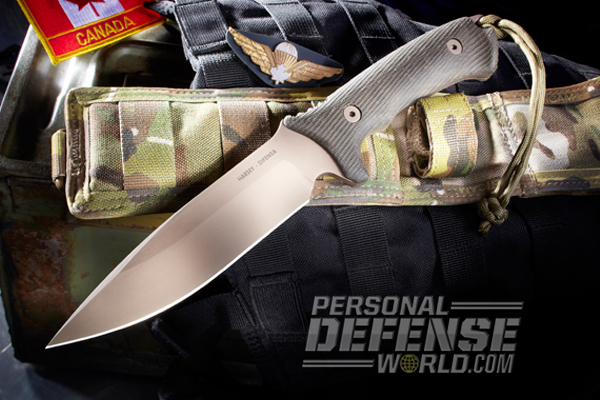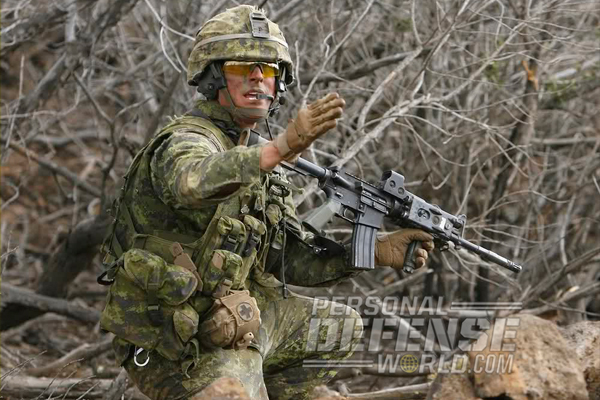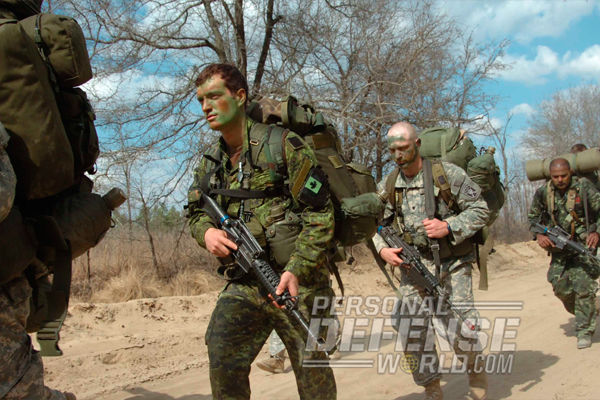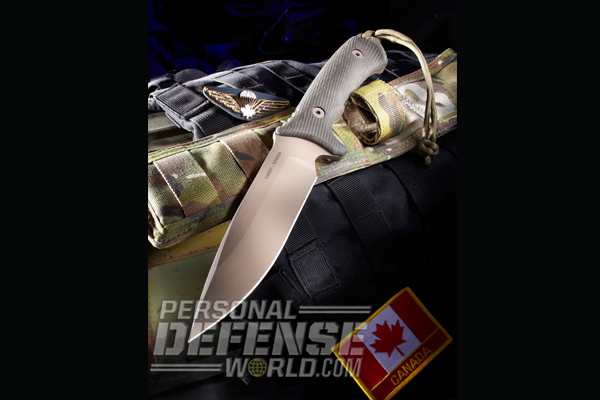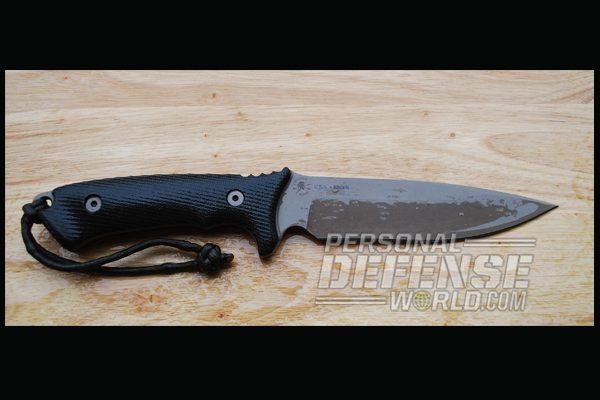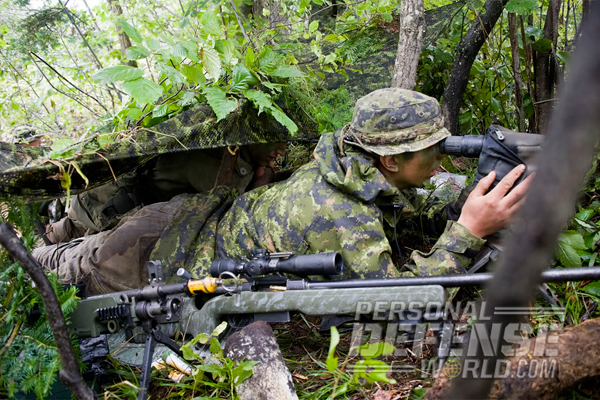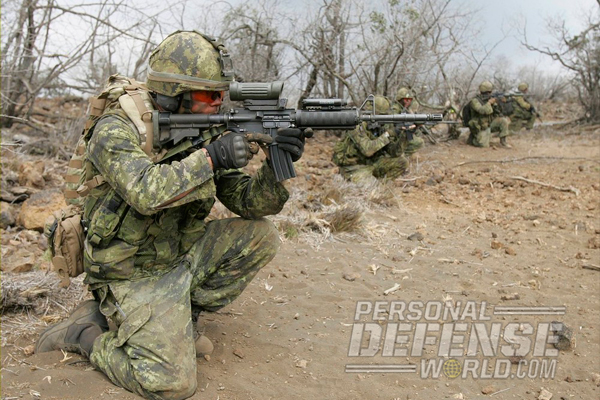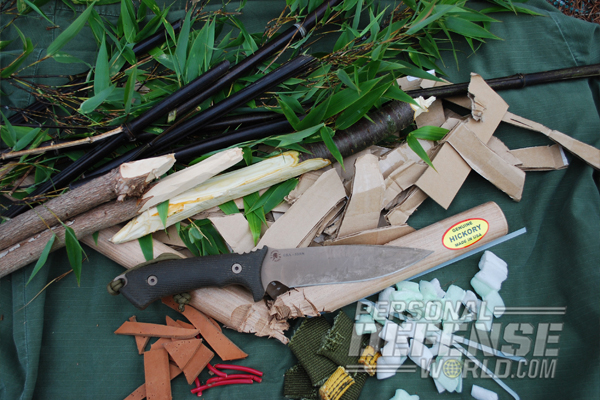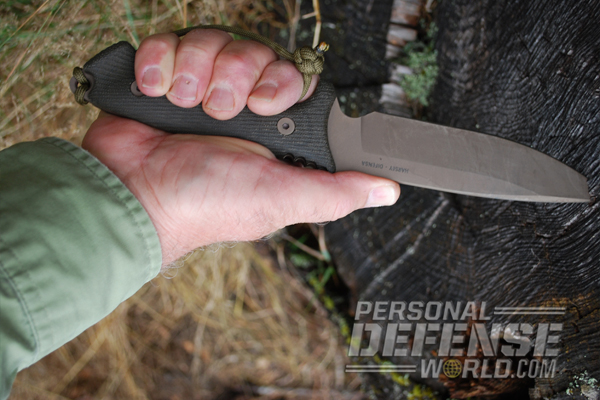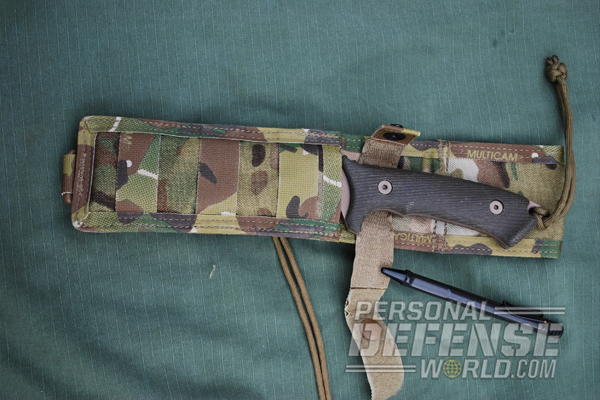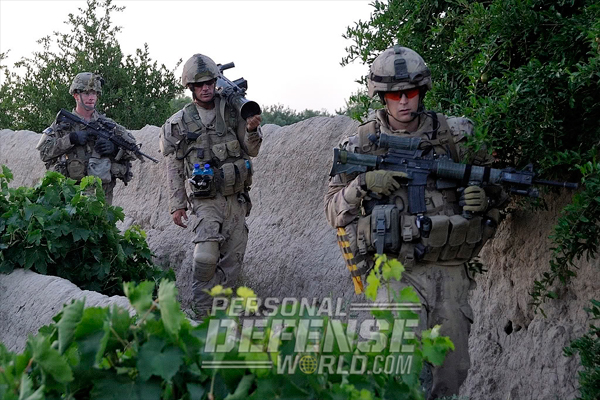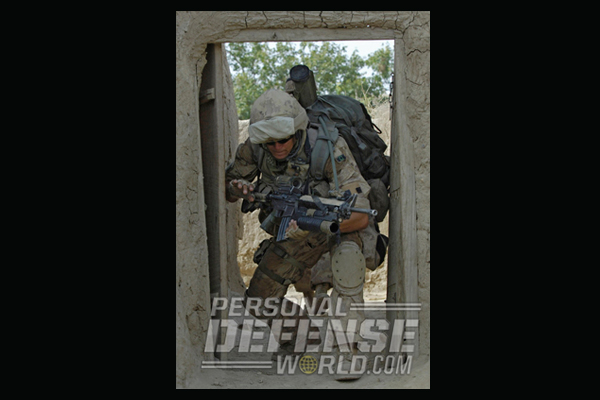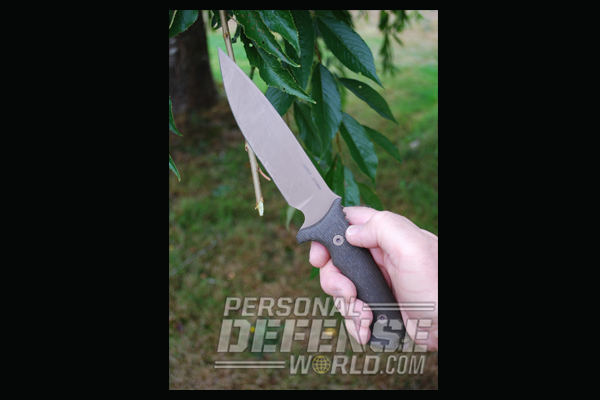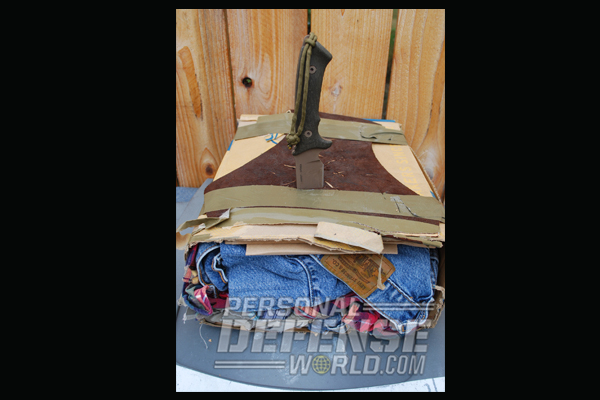When a certain Canadian Special Operations force wanted a knife that would serve them well if they were in the Hindu Kush or a great boreal forest of Canada, they contacted Spartan Blades. From what I have experienced while evaluating the Spartan Harsey Difensa, they came to the right people. In case you are not familiar with Spartan Blades, here is some background on the company and the two men who run it. Founders Curtis Lovito and Mark Carey are retired U.S. Army Special Forces (SF) NCOs; both were snipers and have worked overseas as contractors on personal security details for well-known government agencies. Spartan Blades is located close to Fort Bragg, North Carolina, and they keep in contact with active duty SF soldiers, allowing them to stay current on what is wanted and needed in terms of combat/survival knives. Spartan Blades is also known for using highly qualified experts in the design of their knives. For the Difensa, they turned to Oregon knife-maker Bill Harsey.
“Sleek and deadly, the Difensa would be at home in an active combat theater or deep in the great boreal forest of Canada.”
“Sleek and deadly, the Difensa would be at home in an active combat theater or deep in the great boreal forest of Canada.”
WII INSPIRATION:
The Difensa is named after the battle for Monte La Difensa in Italy, a conflict that took place December 3-9, 1943, which was fought by the famous American/Canadian unit, the 1st Special Service Force, better known as the “Devil’s Brigade.” While the battle was portrayed in the movie The Devil’s Brigade, it did not convey the hard fighting involved. The 1st SSF suffered 77 percent causalities to accomplish what had been considered an almost impossible mission. Somehow it is fitting that this Canadian Special Operations unit turned to Spartan Blades for their knife, as both the Canadians and U.S. Army Special Forces trace their lineage to the 1st SSF. Incidentally, I had the occasion to observe these Canadian operators, and they are competent, professional and live up to a motto of “quiet professionals.” The Difensa has a 6.25-inch-long, spear-pointed blade made from S35VN steel (RC 59-60) that has a Flat Dark Earth SpartaCoat that eliminates light reflecting off of the blade. The blade is flat ground and is 0.187 inches thick, with a point that allows for excellent penetration. The full-tang handle is covered with slabs of textured black or green Micarta that provide a safe and secure grip with or without gloves on (an important feature during Canadian winters). The handle is 5.25 inches long, with an exposed lanyard hole and jimping on top of the blade, at the front of the handle. The knife weighs 11.5 ounces.
Advertisement — Continue Reading Below
The scabbard has a hard plastic liner and is covered with MultiCam fabric. It is fully MOLLE compatible or can be worn on a belt. It has a horizontal retention strap with a neat hook/pile adjustment system so you can adjust the fit of the retention strap. How often have you seen a retention strap that is not really snug around a knife? With the Difensa’s scabbard, you can adjust that fit until the retention strap is as tight as you want it. The scabbard is configured so it is ambidextrous. It is jump capable and weighs in at 5.5 ounces.
FIELD TESTING:
Spartan Blades and Bill Harsey designed the knife to be able to do a lot of different things, but, first and foremost, this is a combat knife. While it can be used to clean and quarter animals, it won’t be as easy as it would with a purpose-designed skinning knife. You just want to get at the meat, cook it (if possible) and eat it, all of which the Difensa is more than capable of doing. I grabbed Post-Its, which the Difensa cleanly sliced. I feathered a seasoned hardwood stick with no problem, as well as sliced up those plastic foam packing popcorns into many little pieces. Next, I tried chopping and cutting into a hickory axe handle and found the Difensa made clean, deep cuts. Carving along the length of the handle, the Difensa’s blade grabbed and cut into the hickory, demonstrating the knife’s good blade geometry. Many readers may have read Colonel Rex Applegate’s Interview of a Finnish soldier, where the soldier stated that a knife had to have at least a 6-inch-long blade to be able to penetrate thick winter clothing. I tied out the Difensa in my penetration box, and it penetrated through three levels of cardboard, one thick piece of leather and into a tightly rolled pair of blue jeans for a penetration total of about 4.5 inches. Penetration into a body would have been significantly deeper. The textured Micarta handle provided a safe, secure grip.
Advertisement — Continue Reading Below
After continuing to chop what was on hand in my garage (cardboard and thick parachute static line), I went up to my kitchen and was still able to cleanly slice a tomato. I deliberately did not wipe off the acidic tomato juice and, examining the blade later, it showed no signs of any corrosion, nor was there any damage to the edge from chopping into that hard, hickory axe handle. I wore the scabbard on my trouser belt and found it was comfortable and easy to access the Difensa. I prefer cloth-covered, hard-lined scabbards, as the cloth covering will mute any sound, such as your rifle butt hitting it. The scabbard has a D-ring at the bottom and a leg tie-down lanyard. Moving outside and continuing to use the Difensa in a variety of cutting tasks, I tried cutting and trimming back my bamboo grove, as well as cutting both deciduous and coniferous branches. As expected, I experienced no problems with any of these materials. Using the edge of the Difensa’s spine, I was able to throw a good shower of sparks off of a ferrocerium rod.
Advertisement — Continue Reading Below
In using the lanyard on the Difensa, I just stick my four fingers through it. When stabbing into something, the lanyard works to help keep your hand from sliding forward onto the blade. The shape of the front of the handle pretty well prevents your hand slipping forward, but there’s no reason not to take an extra precaution. Some quick stabs into a large log butt demonstrated that this technique works well. When chopping with the Difensa, I again slip my four fingers through the lanyard and then grasp the butt of the handle with only two fingers. This allows you to achieve more velocity with a snap cut, and it is now like you are chopping with an 8-inch-long blade rather than a 6.25-inch blade. The exposed lanyard hole/tang comes to a “V” and forms a good non-lethal striking area; hit someone on the back of the hand or at a joint and whatever he is holding will be dropped. Incidentally, edge retention was excellent. When the edge started to drag a little, a few minutes with a diamond hone made the edge ready to go again. Whether you are a member of that Canadian Special Operations unit or someone looking for a combat/survival knife that will not let you down, you should check out the Difensa and the folks at Spartan Blades, you will be glad you did.
For further information on the Spartan Blades Difensa, visit: spartanbladesusa.com or call 910-757-0035.
